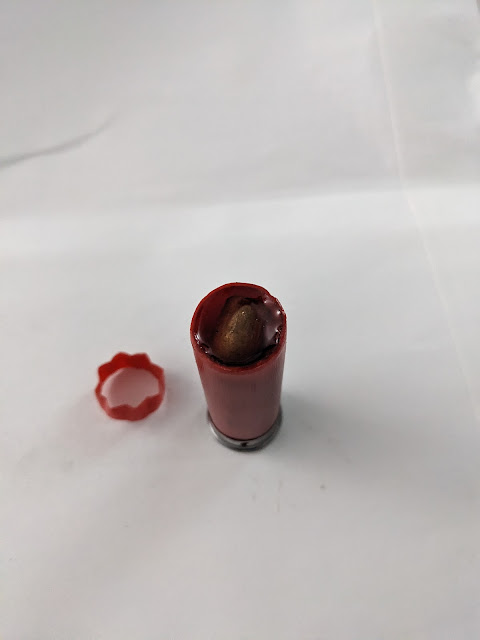Modern firearms are
“dry fire safe” in that they don’t need a round or snap cap in
the chamber to safely work the trigger mechanism through the full
range of operation. However, snap caps are a useful tool for
deliberately inducing a “failure to fire” event during live
training to help perfect the “clear a malfunction” sequence into
muscle memory.
Snap caps are commercially available from a number of manufacturers, often in sets of five for handguns and sets of two for rifles and shotguns. However, it’s often cheaper to make your own dummy rounds using commercial ammunition components.
 |
| https://amzn.to/40f7fth |
In my military
service, a dummy round was an inert training aid that can be
easily distinguished from live ammunition by having indentations on the sides of the brass, being a different color
entirely, or a combination of both feel and appearance. These dummy
rounds were used in training personnel to use weapons in a safe
manner, often in classroom locations. Lessons on how to load, arm, and
troubleshoot a failure to fire could all be done as slowly as needed before going to a range and doing it live. If you’re helping to introduce new people to the shooting sports, then dummy rounds are a great tool for teaching basic firearm manipulation, how to load, unload, and so forth.
Making Your Own
I like to make my
dummy rounds with a drill press by drilling holes through the sides of
the cartridge case for an easy visual indicator that they aren’t live
ammunition. Since I’m a handloader, I can omit the steps of priming and charging a round before crimping in the bullet. This leaves me with a dummy round that has holes in the side for visual
identification, but weighs very close to what a live round would weigh.
I find this to be useful for properly weighting a handgun magazine, as 15
rounds of 115gr 9mm ammunition is about 3.5 ounces of additional mass
if you’re practicing “draw from concealment” drills at
home.
Some of you may be wondering “Why not just take a live round and drill
through it?” I’ve done this when no other option was available to
me, and it works because brass doesn’t spark. I don’t recommend it, though, because there’s still a lot of steel-cased ammunition on the
market and I don’t think the risk justifies the potential reward.
Additionally, if you drill a live round and then pour the powder out
the holes, you still have to deal with the primer. You can’t
use your firearm to do that, either, because the chamber would be directly
exposed to the hot primer gas and you might dislodge the bullet into
the barrel.
For dummy shotgun
rounds:
- Take a spent hull and fill it with BBs and
epoxy just below the crimp line. Because the vast amount of mass in a shotgun shell is in the lead shot, you really have to add a filler material back in to get the right weight/feel.
- Wait for the epoxy to harden, then
cut the crimp away at the crimp line.
- Drill the visual indicators
in the metal part of the hull and drill out the spent primer.
Concerns
“Is there a risk of having a bullet from a homemade dummy round come loose into your firearm?” Yes, but I've not yet encountered that in reality. I’ve experienced an AK-style rifle (Saiga .308) slam uncrimped match ammo so hard into the chamber that it unseated the bullet spilling powder everywhere, so it’s entirely possible that this “inertial bullet puller effect” could happen with a dummy round. If you’re worried about that, then don’t use homemade dummy rounds mixed with live ammo for live training. However, I haven’t experienced this with dummy pistol ammo, and the dummy shotgun ammo is epoxied in place.
Conclusion
Dummy rounds are useful for teaching new shooters the manual of arms with a firearm and for working misfire drills and dryfire practice for more skilled shooters. I cannot recommend strongly enough that every prepper incorporate dummy round-enhanced training drills at home, as they are incredibly valuable to skill building and skill retention and don't require range fees or expending live ammunition.
Dummy rounds are also cheap to purchase and easy to make if you have reloading tools, and I encourage you to buy or make them at your next opportunity. You don't need a whole lot of them, but you should have a few on hand for practice and education.






No comments:
Post a Comment